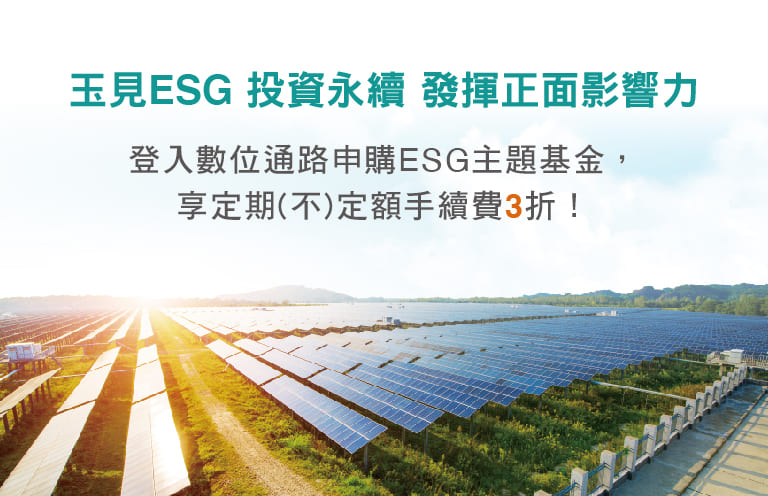Introduction to Mutual Funds
What are "Mutual Funds"?
Mutual funds refer to the funds entrusted by non-specific investors to professional managers for investing management. The financial products which mutual funds invest in include stocks, bonds, futures, gold, precious metals, options, and warrant certificates, which are all treated as potential investment. Based on the proportion of funds contributed, investors are not only entitled to share the investment profits, but also take on a corresponding amount of investment risks.
The Beginner's Guide↓

How mutual funds operate
Mutual funds adopt an operational model where management and safekeeping activities are kept separate, ensuring that assets are secure and professionally managed. Currently, most mutual funds can be conducted transactions via non-discretionary monetary trusts at a bank. Pursuant to the Trust Law, trust assets are not considered as part of the bank's assets are financially independent. Thus, regardless if the bank, fund company or custodian organization suffers from a management issue, investor funds still remain safe. They are operated in the following model:
| Institution | Role |
|---|---|
| Sales Agent | Collects funds from investors, distributes profits to investors. |
| Fund Company | Responsible for managing and operating the fund, and issuing buy and sell orders to securities dealers. They do not personally handle these funds. |
| Custodian Organization | Safeguards investor funds in a dedicated account, and settles these assets following instructions from the fund company. |
What are the categories of mutual funds?
Categorized by Registered Locations
Onshore Funds
Onshore funds are funds issued and managed by domestic fund companies.
Offshore Funds
Offshore funds are funds issued and managed by foreign fund companies, promoted and sold on their behalf in Taiwanese fund companies approved by competent authorities domestically.
Categorized by whether there is a fixed number of units that can be issued
Open-end Funds
There is no fixed number of units that can be issued, and investors may subscribe to or redeem fund units from the fund company any time.
Closed-end Funds
There is a fixed number of fund units that can be issued. Investors must open an account with a securities dealer, and buy or sell fund units in the secondary market.
Categorized by Asset Allocation
Core Funds
Core funds are usually funds with lower risk of fluctuations in net value, and suitable for holding medium to long term, allowing you the opportunity to make stable medium to long-term gains.
Satellite Funds
Satellite funds are usually funds with higher risk of fluctuations in net value, suitable for short-term investment.
Categorized by Investment Regions
Single Country Funds
Fund investments are concentrated on a single country, such as funds specializing in the US or Japan.
Regional Funds
Fund investments are not limited to a single country or a specific region, such as funds specializing in Europe, or emerging markets.
Global Funds
Funds which invest globally in different regions and countries, such as global funds.
Categorized by Investment (1/2)
Equity Funds
Mainly invest in stocks and adopt an investment strategy of seeking long-term capital gains with relatively higher risks.
Balanced Funds
Invest in both stocks and bonds at the same time and adopt a strategy of seeking long-term stable returns.
Bond Funds
Mainly invest in various types of bonds and aim to generate stable interest returns.
Categorized by Investment (2/2)
Fund of Funds
Mainly invests in various funds, and does not directly invest in stocks or other financial products to be more capable of diversifying risks.
Multi-asset Funds
Invest in a wider variety of investment assets compared to balanced funds, which may flexibly adjust investment asset allocations based on market conditions.
Money Market Funds
This type of fund mainly invests in money market instruments with high liquidity in order to flexibly adjust the amount of their short-term cash.
Advantages of Investing in Mutual Funds
| Advantage | Description |
|---|---|
| Low Investment Threshold | Wide variety of different investment choices. You may participate in the market and make investments through small amounts, staying on top of the growth opportunities in different markets. |
| Risk Diversification | Avoid putting all your eggs in one basket by diversifying your investments through portfolios to mitigate investment risks. |
| High Liquidity |
Open-end funds generally
allow you to obtain your funds approximately 2 to 10 days after
redemption. (However, based on the actual situation, redemption times may be subject to the fund company's individual policies and market conditions.) |
| Professionally Managed | Utilizing professional fund managers and research teams, funds are able to greatly improve investment returns through more complete macroeconomic analysis and better selecting investment targets. |
Risks and Profits of Investing in Mutual Funds
Risk |
Description |
|---|---|
| Market Risk | Market risk is the main risk of mutual funds. The net value of a fund can be impacted if the region or market where its investments are based in experience fluctuations or crashes. |
| Exchange Rate Risk | When investing into offshore fund denominated in a foreign currency, or when an onshore fund invests into a foreign market, differences between the type of currency held by the investor and the denominated currency of fund may lead to exchange rate risk. |
| Interest Rate Risk | Refers to losses caused by a large rise or fall in interest rates. Funds investing mainly in bonds are the most affected by this type of risk. |
| Credit Risk | When one of the fund's investment default, expected earnings and dividends are affected. |
Investing involves gains and losses, and there are always risks. However, what are the sources of income for investing in mutual funds?
- Capital Gains: Profits earned from the price difference by buying low and selling high various financial instruments invested in.
- Interest Income: Earnings derived from stocks, bonds, or time deposits invested through mutual funds, in the form of dividends, distributions, or interest.
- Exchange Rate Spreads: Exchange rate fluctuations can affect a fund's earnings when the fund invests into a foreign market, as investment in that market are denominated in a different currency compared to the fund.
Fees for investing in a fund
| Fund subscription/switching/redemption fees | |
|---|---|
| Subscription |
Subscription fees are differentiated between
front-end and
back-end load funds
according to the timing of collection:
|
| Switching | Investors may switch fund assets between various different funds in the same fund series, and there might be fee charged by fund companies, which is approximately 0 to 0.5% of the total amount switched. Additionally, the bank shall charge additional switching fees for each switching transaction. |
| Redemption |
The bank shall collect a trust management fee at the time of redemption
based on the customer's investment period. This fee shall be deducted
from the redemption proceeds. (Some funds have rules where redemption fees are charged for short-term trades. Investors should carefully read the fund prospectus.) |
| Fees Charged During the Fund Holding Period | |
|---|---|
| Management fees | Including the fund company's investment, operational, and management expenses. These fees shall be automatically deducted from the fund's assets, and investors are not required to make additional payments to cover these fees. |
| Custodian fees | In order to pay fees charged by the asset custodian organization. Custodian fees are automatically deducted from the fund's assets, and investors are not required to make additional payments to cover these fees. |
| Other expenses | Direct expenses incurred from buying and selling fund assets, fees for hosting beneficiary meetings, tax liabilities... etc. |
Mutual Fund's Dictionary
-
Beneficiary Certificates
-
When investors subscribe mutual funds, the trustee or fund management company shall issue beneficiary certificates to investors, representing their rights to the fund. Most fund companies now do not issue beneficiary certificates (which are only issued if requested by the beneficiary), and replace these certificates with purchase or sale confirmation statements.
-
-
Mutual Fund Net Asset Value
-
Mutual fund net asset value per unit = This net asset value(NAV) is divided by the total number of outstanding units. And this unit value is what the fund's purchase and sale price for that transaction day is based on.
*Note: Net Asset Value (NAV) = Total asset value of the fund - All liabilities and averaged amortized costs.
-
-
Fund Manager
-
Fund managers represent the fund company in managing the mutual fund, and also represents the research team in making investment decisions to operate the fund.
-
-
Fund Switching
-
Investors of open-end funds may apply for their fund investments to be switched into another fund. However, investments may only be switched into another fund issued by the same fund company and the investor's sales agent also offers.
-
-
Fund Redemption
-
When a fund investment is redeemed, all beneficiary certificates held by the investor shall be converted into cash proceeds and transfer to an account designated by the investor.
-
-
Ex-dividend Date
-
The day following the record date (which varies according to each fund company's regulations), used to calculate dividend amounts and distribute them.
-
-
Dividend Record Date
-
On the record date, the list of investors holding the fund will be settled to confirm eligibility for dividends. Typically, investors who hold the fund on the record date will receive interest distributions for that month.
-
-
Fund Liquidation
-
Fund liquidation takes place when a fund is to be shut down. During this process, the fund company settles all assets of a fund and converts it into cash, then distributes this cash back to the fund's trust beneficiaries based on the proportion of each beneficiary's investment in the fund.
-
-
Prospectus
-
The prospectus describes information such as the mutual fund's investment goals, types, and fees. Investors should ensure that they sufficiently understand all information presented in a fund's prospectus, and evaluate whether the fund's investment characteristics and risks are suitable for them, in order to make better investment decisions.
-
-
Short-swing Trading
-
Fund companies shall charge an additional fee if this transaction is considered by the fund company to be a short-swing trade, which means investor only holds a fund investment for a short period of time (different fund companies have different rules on how long investments need to be held) before switching or redeeming their investment. The short-swing trading fee shall be deducted from the switching or redemption amount. Fund companies also have the right to put investors deemed to have engaged in short-swing trades on a monitoring list, or restrict them from making further transactions. Short-swing trading rules for each fund company are based on rules provided in the fund company's most recent prospectus.
-





